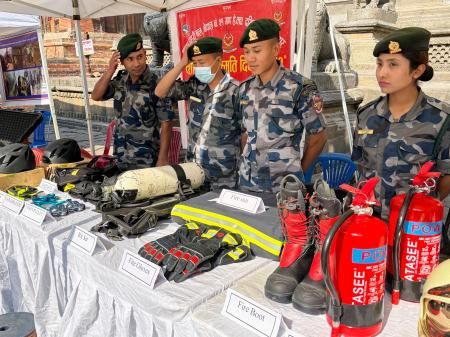Remembering Nepal's Earthquake: A Decade On – Resilience, Recovery, and the Road Ahead
Ten years ago, on April 25th, 2013, a devastating earthquake struck Nepal, leaving an indelible mark on the nation. The 7.8 magnitude quake, and its powerful aftershocks, claimed thousands of lives, leaving countless more injured and homeless. This article reflects on the impact of the disaster, the remarkable resilience of the Nepalese people, the progress made in recovery, and the ongoing challenges that remain.
The Devastation: A Nation Shaken
The 2013 Nepal earthquake was a catastrophic event, causing widespread destruction across the country. The epicenter, located near Kathmandu, resulted in:
- Massive loss of life: Thousands perished, with the official death toll exceeding 9,000, though unofficial estimates are considerably higher.
- Widespread infrastructure damage: Ancient temples, historical sites, homes, and critical infrastructure like hospitals and schools were reduced to rubble. Kathmandu, the capital city, suffered particularly severe damage.
- Landslides and avalanches: The mountainous terrain amplified the disaster, triggering devastating landslides and avalanches that further increased the death toll and hampered rescue efforts.
- Economic disruption: The earthquake crippled Nepal's economy, impacting tourism, agriculture, and overall development.
The Immediate Aftermath: A Global Response
The immediate aftermath was chaotic, with rescue efforts hampered by the scale of the destruction and the remoteness of affected areas. However, a massive global response followed, with international organizations, governments, and individuals providing crucial aid in the form of:
- Search and rescue operations: Teams from around the world joined the effort to locate and rescue survivors trapped under the debris.
- Medical assistance: Essential medical supplies, personnel, and field hospitals were deployed to treat the injured.
- Emergency shelter and food: Provisions were delivered to those left homeless and without access to food and water.
- Reconstruction efforts: International funding and expertise were pledged to support the long-term reconstruction of infrastructure and communities.
A Decade of Reconstruction: Progress and Challenges
The past decade has witnessed significant progress in Nepal's recovery. However, the path has been fraught with challenges, including:
- Slow reconstruction: Bureaucracy, corruption, and logistical difficulties have hampered the pace of rebuilding, leaving many communities still struggling.
- Earthquake preparedness: While significant strides have been made in improving building codes and disaster preparedness, further improvements are crucial for future resilience.
- Economic recovery: The earthquake's long-term economic impact persists, particularly in rural areas reliant on agriculture and tourism.
- Addressing vulnerability: The earthquake exposed existing inequalities, highlighting the vulnerability of marginalized communities and the need for inclusive development strategies.
The Resilience of the Nepalese People
Despite the immense challenges, the Nepalese people have demonstrated remarkable resilience. Their strength and determination in the face of adversity have been inspirational, fueling the recovery efforts. This includes:
- Community-led initiatives: Local communities have played a vital role in rebuilding their homes, schools, and infrastructure.
- Grassroots organizations: Numerous NGOs and local organizations have stepped up to provide support and assistance to affected communities.
- International collaboration: Continued international support and cooperation remain crucial for sustaining the recovery efforts.
Looking Ahead: Building a More Resilient Future
The 10th anniversary of the Nepal earthquake serves as a stark reminder of the importance of disaster preparedness and sustainable development. Moving forward, crucial steps include:
- Investing in infrastructure: Strengthening infrastructure to withstand future earthquakes is paramount.
- Improving disaster preparedness: Educating communities about earthquake safety and developing comprehensive emergency response plans.
- Promoting sustainable development: Focusing on inclusive and equitable development that reduces vulnerability and builds community resilience.
- Continued international support: Sustained international cooperation is vital for supporting Nepal's long-term recovery and development.
Remembering the 2013 Nepal earthquake is not just about commemorating the tragic loss of life, but also about celebrating the resilience of its people and learning from the lessons learned. It's a call to action, urging continued support and collective efforts towards building a safer and more resilient future for Nepal. Let's continue to support Nepal's journey towards recovery and lasting peace.
Keywords: Nepal earthquake, 2013 Nepal earthquake, Nepal earthquake recovery, Nepal earthquake reconstruction, Nepal disaster relief, earthquake resilience, Nepal disaster preparedness, Kathmandu earthquake, Nepal development
(Note: This article would benefit from the inclusion of relevant images and potentially a video showcasing the recovery efforts. Internal links to other articles about Nepal's development and disaster preparedness would also enhance SEO and user experience.)
